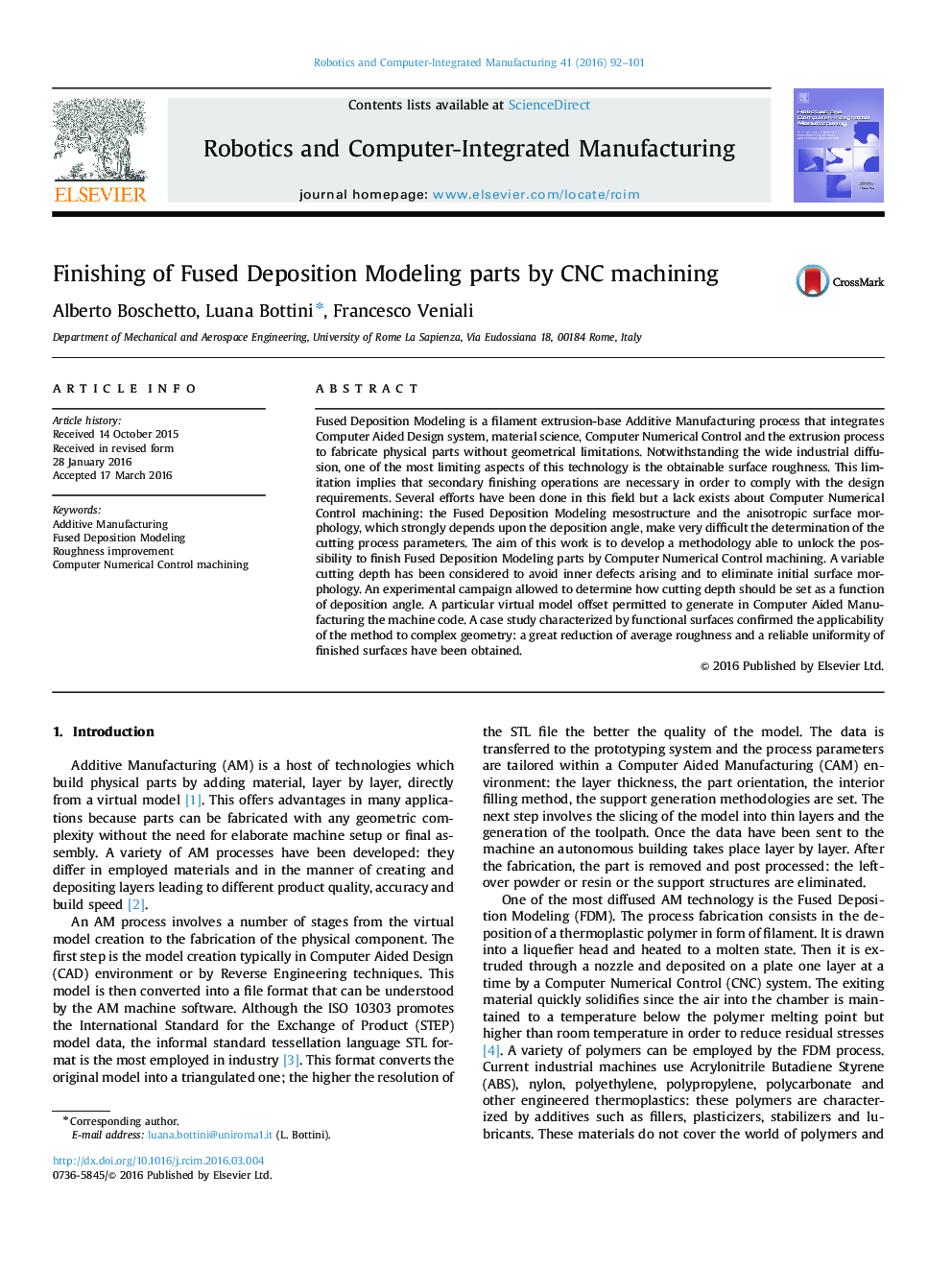| Article ID | Journal | Published Year | Pages | File Type |
|---|---|---|---|---|
| 6868046 | Robotics and Computer-Integrated Manufacturing | 2016 | 10 Pages |
Abstract
Fused Deposition Modeling is a filament extrusion-base Additive Manufacturing process that integrates Computer Aided Design system, material science, Computer Numerical Control and the extrusion process to fabricate physical parts without geometrical limitations. Notwithstanding the wide industrial diffusion, one of the most limiting aspects of this technology is the obtainable surface roughness. This limitation implies that secondary finishing operations are necessary in order to comply with the design requirements. Several efforts have been done in this field but a lack exists about Computer Numerical Control machining: the Fused Deposition Modeling mesostructure and the anisotropic surface morphology, which strongly depends upon the deposition angle, make very difficult the determination of the cutting process parameters. The aim of this work is to develop a methodology able to unlock the possibility to finish Fused Deposition Modeling parts by Computer Numerical Control machining. A variable cutting depth has been considered to avoid inner defects arising and to eliminate initial surface morphology. An experimental campaign allowed to determine how cutting depth should be set as a function of deposition angle. A particular virtual model offset permitted to generate in Computer Aided Manufacturing the machine code. A case study characterized by functional surfaces confirmed the applicability of the method to complex geometry: a great reduction of average roughness and a reliable uniformity of finished surfaces have been obtained.
Related Topics
Physical Sciences and Engineering
Computer Science
Artificial Intelligence
Authors
Alberto Boschetto, Luana Bottini, Francesco Veniali,
